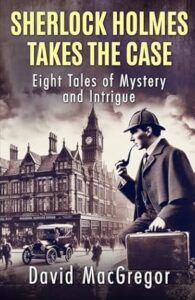 From London to England’s Lake District to Edinburgh, Scotland, Sherlock Holmes and his reliable companion, Dr. John Watson, are always ready to solve the case. In David MacGregor’s Sherlock Holmes Takes the Case: Eight Tales of Mystery and Intrigue, the detecting duo travels great lengths in search of intrigue and crime. For example, they research a case of tiny coffins found on Arthur’s Seat in Edinburgh in “The Adventure of the Scottish Coffins.” They uncover fraud in “The Amateur Mendicant Society.” Mudlarking in the Thames in London dirties Holmes’ boots in one of the stories. They uncover how an ancient Egyptian scroll went missing in “The Adventure of the Alexandrian Scroll.” And Holmes diverts attention by suggesting multiple solutions in a stabbing in “Death at Simpson’s.”
From London to England’s Lake District to Edinburgh, Scotland, Sherlock Holmes and his reliable companion, Dr. John Watson, are always ready to solve the case. In David MacGregor’s Sherlock Holmes Takes the Case: Eight Tales of Mystery and Intrigue, the detecting duo travels great lengths in search of intrigue and crime. For example, they research a case of tiny coffins found on Arthur’s Seat in Edinburgh in “The Adventure of the Scottish Coffins.” They uncover fraud in “The Amateur Mendicant Society.” Mudlarking in the Thames in London dirties Holmes’ boots in one of the stories. They uncover how an ancient Egyptian scroll went missing in “The Adventure of the Alexandrian Scroll.” And Holmes diverts attention by suggesting multiple solutions in a stabbing in “Death at Simpson’s.”
Clever and Entertaining Stories
Each story is cleverly written and tightly plotted. Holmes and Watson are at the peak of their form in each story. MacGregor captures the flavor of the original Conan Doyle detective duo. The hustle and bustle of London is as much a part of the scene as is the Lake District village of Grasmere. MacGregor expertly distinguishes between the “steam-hammer metronome” that is London and the bucolic “gentle peaks” and “burbling waters” around Grasmere. In a couple of stories, Holmes allows a different kind of justice to be done. “Justice is not the sole province of bewigged old men in courtrooms. Justice belongs to us all.” Conan Doyle implied the same sentiment in a few of his stories. The last story has the duo up on the rooftop trying to apprehend a jolly old, gift-giving phenomenon. One who is aided by a red-nosed hooved creature. Sorry Holmes, it’s not Moriarty.
So, look to be entertained with the stories in this collection. “Death of a Mudlark” and “The Adventure of the Mysterious Benefactor” enchanted me. Which favorites will you choose?
Sherlock Holmes Takes the Case: Eight Tales of Mystery and Intrigue
by David MacGregor
edited by David Marcum
© 2025
MX Publishing

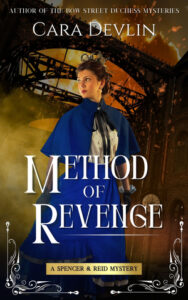 Why are children dying when wallpaper from Henderson and Company is hung in their bedrooms? Could there be something wrong? But why aren’t any parents talking about it?
Why are children dying when wallpaper from Henderson and Company is hung in their bedrooms? Could there be something wrong? But why aren’t any parents talking about it?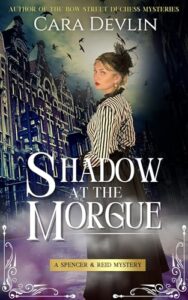 With Shadow at the Morgue,
With Shadow at the Morgue, 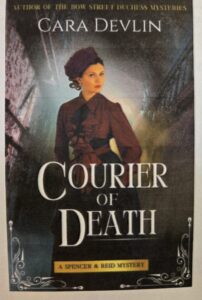 If you like historical fiction and/or mysteries,
If you like historical fiction and/or mysteries, 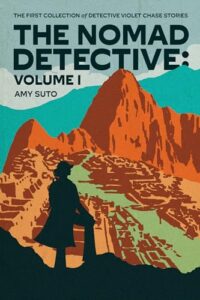 Violet Chase, the protagonist of The Nomad Detective, Volume I, by
Violet Chase, the protagonist of The Nomad Detective, Volume I, by 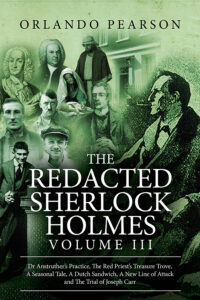 The six stories in Orlando Pearson’s The Redacted Sherlock Holmes Volume III are a mixed bag. In some stories, such as and “The Book-Thief and the Blitz,” Holmes seems slow and withdrawn. In fact, Watson reports at one point,” Holmes spent the time we had in a daze.”
The six stories in Orlando Pearson’s The Redacted Sherlock Holmes Volume III are a mixed bag. In some stories, such as and “The Book-Thief and the Blitz,” Holmes seems slow and withdrawn. In fact, Watson reports at one point,” Holmes spent the time we had in a daze.”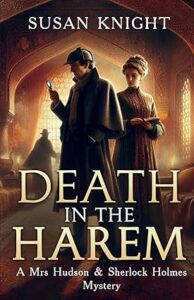 Martha Hudson helps Sherlock Holmes detect something amiss in the harem of Sultan Abdul Hamid in
Martha Hudson helps Sherlock Holmes detect something amiss in the harem of Sultan Abdul Hamid in  After reading Tales of Scotland Yard: Ratcliffe Highway, by
After reading Tales of Scotland Yard: Ratcliffe Highway, by  With The Traitorous Templar,
With The Traitorous Templar,  Even though summer is edging towards fall, and I haven’t set foot on a beach in many a year, I love books that deal with bodies of water, sand and summertime. Eastern Shore Shorts: Stories Set in Berlin, Cambridge, Chestertown, Chincoteague, Easton, Rock Hall, Salisbury, St. Michaels, and Tilghman Island, by
Even though summer is edging towards fall, and I haven’t set foot on a beach in many a year, I love books that deal with bodies of water, sand and summertime. Eastern Shore Shorts: Stories Set in Berlin, Cambridge, Chestertown, Chincoteague, Easton, Rock Hall, Salisbury, St. Michaels, and Tilghman Island, by